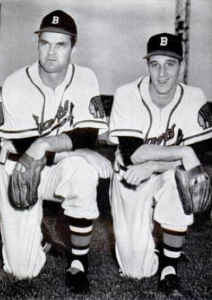by James Scott Bell
@jamesscottbell
 Some years ago I was at the dentist for a cleaning, and along the way the hygienist asked, “So what do you do?”
Some years ago I was at the dentist for a cleaning, and along the way the hygienist asked, “So what do you do?”
“I’m a writer,” I said.
“Oh? What do you write?”
“Thrillers.”
“I love thrillers…”
I knew what was coming next, and was powerless to stop it.
“…Have I heard of you?”
The answer to that is always No. So I changed things up a bit.
“Have you heard of James Patterson?” I asked.
“Yes!”
“Well, I’m not him.”
At least she chuckled. Then I told her my name. Shocker: she hadn’t heard of me. So I gave her my author card. She leaned me back in the chair.
In a low voice, she said, “I know the secret of why James Patterson’s books are bestsellers.”
“Do tell,” I said, hungry to find out what a reader deems the magic elixir.
“He writes really short chapters,” she said.
By gum (pun intended), she got it. At least part of it. For Mr. Patterson is the writer who has unapologetically used the short chapter to help create a sense of propulsion, of page-turning momentum.
Indeed, in a Patterson it’s not uncommon to read what would usually be a 1500 word chapter broken up into three or four numbered units. So a book with 30 chapters might actually come out to be 120 when published. Which raises the question, How long should a chapter be?
Of course, the answer is it all depends on your strategy. For thrillers, short chapters control pace. A more literary approach might go the other direction.
My first Ty Buchanan legal thriller, Try Dying, has 127 numbered chapters. They are of varying lengths, but the gist is that I wanted it to move fast. Still, I was slightly embarrassed by this, as looking at a TOC with numbers 1 – 127 is almost comical.
Then I read a thriller by Andrew Vachss, who had one of the cooler thriller-author pics around. And I was pleasantly surprised to find he didn’t use chapters at all. Just a series of scenes set off by a drop cap. It looks like this (from Footsteps of the Hawk):
I liked it so much that all of my Mike Romeo thrillers are done in this fashion. Indeed, I was pleased to read an Amazon review the other day that said this: I particularly like the format of simply starting the next scene with a little space and a large initial cap. I write in scenes, and this allows me to be cinematic and use a “smash cut” or “jump cut” between them.
I note, however, that this only works in First Person POV. Otherwise, the reader would become confused as to who the viewpoint character is in a given scene.
A helpful article on chapters says:
Short chapters are good for plot-centered novels with fast pacing and suspense. They are also used in novels with longer chapters to interject action that takes place away from the main plot, perhaps to let readers in on something the main character doesn’t know.
The dangers in writing a lot of short chapters include underdeveloped characters and a plot that twists and turns too quickly for readers to absorb and enjoy it.
Long chapters are good for epic drama, for world-building with background, and for developing characters at a leisurely pace. The danger lies in bogging down the reader with excessive description, tedious monologues, and inadvertent repetition.
Chapters of any length are most effective when they form a satisfying unit in themselves and end at a natural break in the action or story in a way that invites the reader to continue.
So, writing friends, I ask, do you have a strategy for your chapters? Do you like a standard length? Does genre play a part in this? Have at it in the comments!



 I was reading in the back yard when Mrs. B came out to let me know that L.A. was in for two days of rain.
I was reading in the back yard when Mrs. B came out to let me know that L.A. was in for two days of rain.